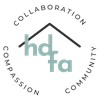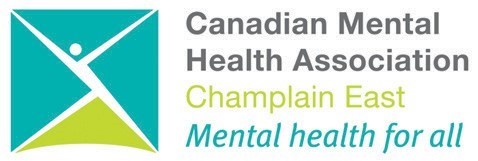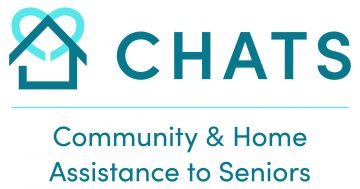
Pathways Newsletter
Pathways is a bi-annual newsletter that provides updates about current research activities, recent publications of our findings, and invitations for involvement in our research at the Centre for Collaborative Research on Hoarding. Pathways is for anybody who wants to learn more about research and partnership on hoarding – those of lived experience, friends and family of loved ones, or professionals working with hoarding.
To open and view .pdf files, you will need Adobe Acrobat reader which is available for free at acrobat.adobe.com.
Community Partner Spotlight
In each edition of Pathways, we interview a community partner to better understand different experiences with hoarding disorder. Read the interviews below!
- Hoarding Disorder Foundation of Alberta
- Canadian Mental Health Association
- Lived Experience Advisor
- Lookout Housing + Health Society
- Community & Home Assistance to Seniors
- Vancouver Fire Rescue Services
Counselor Terri Bailey of
Hoarding Disorder Foundation of Alberta (HDFA),
from the spring of 2023

What is the overall mission of your organization?
The Hoarding Disorder Foundation of Alberta works to provide a trauma-sensitive response for people living with hoarding disorder in Alberta through support groups and case management. At HDFA, we aim to collaborate with relevant partners and services to provide safe spaces to support wellness.
How does the HDFA work with hoarding?
The HDFA uses a multidisciplinary harm-reduction approach when working with hoarding. On the ground, as a new organization, this means that we’ve worked to secure funding for support groups and drop-in services for people living with hoarding disorder. In the future, among our many hopes and dreams for our organization, we’re looking to secure funding to expand our services to include on-site practical support for decluttering, as well as counselling services.
Tell me about an innovative aspect of the HDFA approach to helping clients with hoarding.
We were recently awarded a grant through the City of Edmonton. This grant has allowed us to create a new program of ours called “Safety Days”. Safety Days consist of trauma-sensitive support in the event of a hoarding-related crisis. This can include, for instance, situations where someone is getting evicted, or their children are being taken due to risks associated with hoarding.
Safety Days include three components: Pre-support, where the person is prepared for the actual intervention and provides the team with feedback; Safety Day, the day of the actual intervention; and finally Post-support, which occurs to manage possible traumatic responses associated with interventions.
This approach is fairly new for us, and we’re really excited about working with more people.

It makes me excited that we can come together as a country to really work toward something.

What does HDFA pride itself on related to hoarding in the community?
Beyond simply building up the organization and becoming an official non-profit, we have a number of things we’re quite proud of. Just recently, during our first ever Safety Day we helped a client who was at risk of losing custody of their children as a result of safety concerns in the home due to hoarding. Thanks to the intervention, and our 12 helpful onsite members, our client was able to retain custody of their children, and we are now working to set up long-term support for the family.
This year, we’re hoping to work on developing relationships and co-writing grants with Indigenous land organizations. We recognize that the needs of each community are different, and part of reconciliation means working to support the needs of Indigenous communities on their own terms, in ways that are sensitive to their rich culture.
How is your partnership with the Centre meaningful?
From a multi-disciplinary perspective, it’s like we’re part of this larger Canadian community. It makes me excited that we can come together as a country to really work toward something. From this excitement comes the desire to be privy to new work that the Centre is doing, and new ways of working, being and speaking. It makes me feel like I’m a part of something bigger than myself.

Mark Snelgrove and Stacey Murphy of
East Champlain’s Canadian Mental Health Association (CMHA),
from the fall of 2022

Tell me a bit about your team.
Stacey: Well… this is us! In relation to the hoarding program, there are two of us that work primarily in our area. We cover three different counties in our little community: Stormont, Dundas, Glengarry and Akwesasne.
Mark: We’ve been lucky that the CMHA management team has been on board with that, and have been willing to invest in our program.
What is the East Champlain Canadian Mental Health Association’s overall mission?
Mark: Our mission is to promote and improve mental health in our community by delivering community-based programs and services. The agency provides intensive case management services to folks with severe and persistent mental health concerns. From there we specialize in a plethora of programs from peer-support, employment opportunities, hoarding treatment, all the way to our supportive housing program that provides subsidies for people to ensure that they stay adequately housed.
The city of Cornwall is the largest municipality in the region, and they support our program. They have an agreement with CMHA-Champlain East to help prevent homelessness – with a special focus on hoarding situations.
Why is hoarding something that CMHA cares about?
Mark: Unfortunately, a while back Cornwall had a couple of high-profile fires where people lost their lives. They found that hoarding was often the source of the fires. This led to the formation of a hoarding response coalition to keep our population safer, and CMHA was well placed to be a lead agency with that because of our deep experience addressing struggles with homelessness and mental health concerns.

We promote autonomy and self-determination, and that drives the work we do.

Tell me about an innovative aspect of East Champlain CMHA’s approach to helping clients with hoarding.
Stacey: We have modeled our program after a lot of leaders and researchers in the field. One of the main things we really prioritize is the client-directed care and clients’ ability to make decisions and engage in supports that feel right to them. We promote autonomy and self-determination, and that drives the work we do. Whether it be one-on-one work, in Buried in Treasures groups or even working with professional organizers, it’s all very client-driven and client-focused.
Tell me about your role in the HEATH pilot and field trials.
Stacey: We have a unique one, in the sense that there ar e two of us [that go into homes] and we hear that is not typical with other programs across the country. That allows us to provide some additional data from a two-person perspective to consider and review.
Mark: And the fact that we are able to go back and see the people we’ve worked with. That way the HEATH can be administered multiple times across different people – it’s a great spot to be in in that way. To leave our own little mark on the project and help out agencies that are doing great work – that’s such a thrill for us professionally.

Lived Experience Advisor,
Ross Bartleman,
from the spring of 2022

Tell me a bit about yourself.
Music and theatre far outweigh anything else in terms of interests. I’ve been performing for over 50 years. I’ve done musical theatre, dramas, solo plays and produced a couple of shows. I’ve done a lot of volunteer work in the arts community, so that’s a huge and important thing for me – and another outlet for me to express things rather than just carry them. My creative work also allows me to help other people who are facing similar challenges.
My partner and I also have a Schnauzer named Oliver. For me, my dogs have been a saving grace.
How long have you struggled with clutter?
It started about 32 years ago, after my mother died. I was with a partner at the time and that same year we split up. That was when I went over a cliff.
What is your relationship to clutter or stuff?
For me, hoarding is really connected to years of unresolved trauma and my refusal to accept my mother’s illness and death. For many years, I told myself that it wasn’t real, and that meant that much of my trauma was never resolved. So for me my things become a replacement for the person. Sometimes they even evoke the memories and feelings of that person because the things belonged to them.
I have paper materials, notes from way back when. I probably have 400-500 vinyl records and about 500-600 CDs. In my case, it’s all material possessions. I’m very particular about cleanliness. There’s no way I would allow trash to accumulate in the house – that’s not something I would be okay with.

…it’s really important to expand the capacity to help more people…

What interventions have you tried and what has been successful for you?
(Laughs) Many, many interventions! I’ve always read a lot, and I started reading a lot of self-help books. I’ve done support groups for loss and grief, hours and hours of individual therapy, and mindfulness training. The most critical pieces of learning for me have been a result of my exposure to DBT – specifically, how to practice mindfulness, distress tolerance, as well as emotional regulation. I’ve gotten to the point now where I try and do mindfulness practice every day, sometimes for a few minutes or up to an hour a day.
I just finished tax academy training, and I am now a poetry student in The Writers Studio program at SFU. So now I feel like “oh this is what a normal life is”. That’s why I think seeking out care for the [hoarding and unresolved grief] was a great decision.
Tell me about your partnership with the Centre at UBC. How is it meaningful?
I took part in the Centre’s hoarding intervention group with five other participants. We did a number of meaningful exercises together over the course of 5 months (both in the group and in our homes), and I think having people there for this level of support made it one of the most impactful interventions.
A little while later my contact with Sheila [Woody] gave me the opportunity to co-lead a self-help group for hoarders based on the book Buried in Treasures. That was also very meaningful to me because I’m interested in anything that can potentially help people deal with the disorder. It’s also really great because even though I’m leading, I’m still learning at the same time.
What made you choose to get involved as a Lived Experience Advisor?
Sheila and I have been in constant contact, and she rocks! So when she asked if I would be interested in being a lived experience advisor for a research project I said “absolutely”. I’m keen to be involved in helping create whatever solutions can be added to the toolkit. Overall, it’s really important to expand the capacity to help more people, and that’s something that can be applied to mental health more generally, too.

Manager Jana Sasaki of
Eastside Oppenheimer building,
from the summer of 2021.

Tell me about your organization & team.
Lookout Housing + Health Society is the official name of the organization. However, Assisted Reduction in Clutter and Hoarding (ARCH) is the specific program within Lookout that is focused on tenants with hoarding.
What is Lookout’s overall mission?
We respectfully provide caring, non-judgmental, non-sectarian, flexible services. Through advocacy, support, and minimal barriers, we reduce harm to people who have a diversity of challenges. We assist them to regain and maintain stability and achieve a greater quality of life.
How does Lookout work with hoarding?
Over the last few years we developed a team aimed at working with our residents within their comfort-level and on a schedule that works best for them; we take a harm-reduction approach, giving our tenants control and authority over their own homes, while still emphasizing the importance of having safe homes, clear paths, and fire safety.

…our approach is to be preventative and proactive…

Why is hoarding something that Lookout cares about?
As an organization focused on social housing, clutter and collecting is something that we often see in our clients’ homes. We’ve discovered that a harm reduction approach to decluttering is less traumatic for our residents in achieving their goals. Additionally, as a result of the COVID-19 pandemic, decluttering has become even more crucial as people are confined within their homes, which can be quite small (especially SROs).
Tell me about an innovative aspect of the Lookout approach to helping clients with hoarding.
Lookout’s ARCH program focuses on harm reduction. As such, our approach is to be preventative and proactive – to work on education and harm reduction as opposed to reacting to inspections and violations. For instance, at Lookout we take the focus off of forced clear-outs, eliminating them whenever possible. Many of our tenants may have had a negative experience with a forced clear-out or eviction before, so trying to reduce that trauma is something we’re focusing on.
What is something Lookout prides itself on related to hoarding in the community?
As a whole, Lookout is proud of its non-judgmental and low-barrier support. We are conscious of stigma, and we aim to open up conversations and build trust. If tenants don’t feel like they’re being judged, then they may be more comfortable opening up about their collecting and other conversations as well.
How is your partnership with the Centre meaningful?
It’s been invaluable. Initially Christiana [Bratiotis] came in and met with our team, and she gave an introduction to hoarding and answered questions. More recently, Christiana and Kate [Kysow] have continued to help educate us, give us tips, reaffirm the things we’re doing well and suggest things we could do differently, and also build connections and resources. For example, Christiana introduced us to the International OCD Foundation (IOCDF) conference. The web-based hoarding conference in the past two years has particularly handy and allowed our team to participate.

Occupational Therapist Alda Melo of
the Community and Home Assistance to Seniors organization,
from the spring of 2021.

What is the overall mission of your organization?
Community and Home Assistance to Seniors (CHATS) delivers high-quality home and community services and experiences for older adults and caregivers so that clients can live at home independently, safely, and with dignity.
How does CHATS work with hoarding?
The Tenancy Risk Reduction Service to Seniors (TRRSS) program at CHATS aims to decrease the risk of tenancy loss. The program supports individuals living in cluttered environments with low to moderate income. We use a harm reduction approach to reduce risks and to address hoarding behaviors. The focus is on using a client-centered perspective to create customized service plans and coordinate teams to address clients’ specific needs. Every client gets an assessment, care coordination, and hands-on support for clutter reduction throughout the program. Other service components include mental health case management, occupational therapy, client advocacy, and minor repairs to the home.
Why is hoarding something that CHATS cares about?
Hoarding is a serious problem that poses health and safety risks to the individuals living with hoarding and to others living in the home and communities at large. Social service agencies are increasingly identifying older adults who are at risk of losing their tenancy due to hoarding, unclean, cluttered, and unmaintained homes. At CHATS, we are committed to our clients being able to live at home safely.

…we are committed to our clients being able to live at home safely.

Tell me about an innovative aspect of the CHATS approach to helping clients with hoarding.
As a response to the COVID-19 pandemic, in partnership with VHA Home Healthcare and funding from Community Foundations of Canada, we recently created the Remote Engagement Advocacy and Collaboration for Hoarding (REACH) project to be able to provide virtual care for our clients with hoarding behaviours. Through video conferencing, the program provides structured groups, such as Buried with Treasures, an 8-week clutter support group, assessment, decluttering sessions, and post in-home service maintenance support. REACH has been successful in expanding client’s support options and decreasing isolation during the pandemic.
What is something CHATS prides itself on related to hoarding in the community?
TRRSS has grown so much in the last few years! We began the program in 2014, and we are the only hoarding program in the York (Ontario) region. Initially, we provided services only to individuals with hoarding and their families. Since then, TRRSS has expanded to providing education, training, and outreach on hoarding to the community, including housing providers, legal aid agencies, and mental health providers.
How is your partnership with the Centre meaningful?
Partnering with the Centre allows us to contribute to the development of new knowledge about hoarding and learn more about community-based interventions. It also provides for a wide range of knowledge, best practices, and information sharing. We aim to deliver the right type of service to our clients at the right time, and we firmly believe that this partnership can support us to continue to do that.

Deputy Fire Chief Rob Renning of
Vancouver Fire Rescue Services,
from the summer of 2020

What is the overall mission of the Vancouver Fire Rescue Services?
Building safer communities through partnership, education, and prevention.
What work does your organization do specifically related to hoarding?
We work with various organizations to spend time trying to get the individual with hoarding into a safer state within their home. One of our firefighters will usually team up with one nurse from Vancouver Coastal Health (VCH), to build a relationship with the resident. We may also partner with different groups within the city to address the resident’s specific needs (e.g., working with the engineering department to get bins to help the individual clean up on their own, or working with VCH to supply counselling and treatment options). Although, it’s a very slow process, it seems to work well in the long term.
Why is hoarding something that your organization cares about?
Hoarding presents a significant safety risk for the individual living in the home, in addition to others around them. Years ago, we had some incidents in which people were trapped in their building; they perished in fires because they were unable to get out, with some firefighters getting badly injured trying to enter. Addressing hoarding is ultimately about making the community safer.

For us, success is leaving a person safer at the end of the day.

What are some of your organization’s innovations around hoarding intervention?
The Hoarding Action Response Team (HART) is a partnership with multiple agencies and departments within the city and was the first team to imbed a health organization (i.e., VCH) as part of the process. Other firefighters may go in and clean it themselves or order a clean-up, but that doesn’t tackle the real root of the problem. Our approach is multi-pronged – we make both the individual and building safer, in addition to working with a health agency to give counselling attention to that individual.
What is something your organization prides itself on related to hoarding in the community?
We’re proud of the fact that we are taking the time to build relationships and make these residents and sometimes entire buildings, safe. We won’t participate in any approach that leads to an eviction, rather we ensure that we have a multipronged approach to this. We ensure there’s always a place for the person to stay until their own home is functional again, if the situation is that severe. We use a slow process to work with individuals as opposed to just evicting them and moving the problem from one building to another.
Why is your partnership with the Centre meaningful?
For us, success is leaving a person safer at the end of the day. If we can leave a resident and their building safer than when we started, that’s already a success. We’re successfully making a difference in people’s lives.
